2 months by cncdivi
Slotting cutters have become an essential tool for craftsmen and machinists alike, enabling them to create precise slots and grooves in a variety of materials.
But with so many options available on the market, how do you choose the right one for your needs?
In this comprehensive guide, we will explore the world of slotting cutters, their types, and how to choose the best one for your application. We will also delve into the world of inserts and accessories, discuss top brands, and provide tips on maintenance and troubleshooting common issues.
So, let’s embark on this journey to unlock the true potential of slotting cutters!
Short Summary
- Slotting cutters are cutting tools used to create slots in workpieces, available in various materials and types with numerous models and sizes.
- Factors such as slot size, material being cut, and type of cutter must be assessed for optimal efficiency & accuracy when choosing the right one.
- Regular inspection, cleaning & lubrication is necessary for maintaining a slotting cutter’s performance & longevity. Improper usage can lead to inaccurate cuts or wear and tear.
Understanding Slotting Cutters
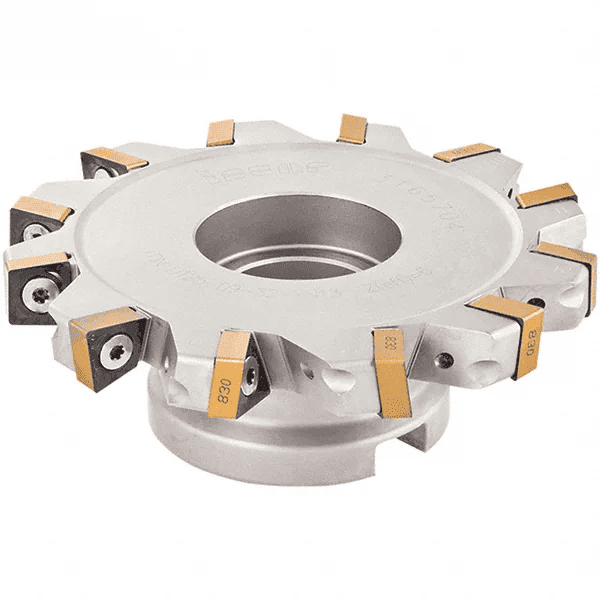
Slotting cutters are versatile cutting tools designed to create precise notches in rotary shafts to accommodate machine keys, and for slot milling in various materials, including low carbon steels. Brands like Bosch and Kennametal offer high-quality slotting cutters with multiple flutes for efficient material removal, ensuring enhanced durability and longevity.
These cutters are designed to provide superior performance and accuracy, and are available in a variety of colors.
What is a Slotting Cutter?
A slotting cutter is a cutting tool utilized to create slots in a workpiece. It can be made from various materials, including high-speed steel, carbide, and ceramics, as well as specialized materials like CDX for specific applications. Slotting cutters, T-slot end mills, Keyseat Cutters (also called Woodruff Cutters), Slitting Saws, solid carbide slotting cutters, and carbide-tipped steel end mills are the various types of slotting cutters available, each with a different number of models and sizes to choose from.
These versatile tools can be employed in a wide range of applications, such as woodworking, metalworking, and even plastic fabrication. From making keyways in shafts to milling slots for decorative inlays in furniture, the possibilities are endless when it comes to using slotting cutters.
Types of Slotting Cutters
There are several types of slotting cutters available, each designed for specific applications and materials. Slotting cutters are suitable for use on wood, plastic, and laminate. T-slot end mills can be utilized on a variety of materials, including aluminum, brass, bronze, iron, and steel. Solid carbide slotting cutters are known for their superior hardness, strength, and wear resistance when compared to high-speed steel and cobalt steel, providing the longest life and best finish on hard material. Carbide-tipped steel end mills possess superior sharpness and hardness even at elevated temperatures compared to high-speed steel.
Understanding the different types of slotting cutters and their compatibility with various materials is crucial for achieving the desired results. By selecting the right cutter for your application, you can minimize tool wear and maximize the efficiency of your cutting process.
Choosing the Right Slotting Cutter
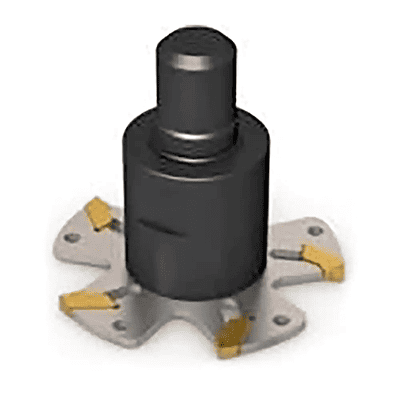
Selecting the appropriate slotting cutter depends on several factors, such as the desired slot size, the material being cut, and the type of cutter. By carefully considering these factors, you can ensure that you choose the right tool for your specific application. This will ultimately lead to improved efficiency and precision in your work.
Edge Length Considerations
The edge length of a slotting cutter is of paramount importance, as it can influence the cutter’s durability and the cutting depth that can be achieved while preserving machine rigidity. Factors such as the type of material being cut, the cutting speed, the feed rate, and the depth of cut all have an impact on edge length.
When determining the appropriate slotting cutter, it is imperative to consider these factors in conjunction with the desired cutting depth and the rigidity of the machine. By selecting the right edge length for your application, you can minimize tool wear and achieve optimal results.
Material Compatibility
Material compatibility is an essential consideration when selecting a slotting cutter, as the material of the cutter should be determined in light of multiple factors, including the material of the workpiece, cost, and tool life. Slotting cutters are typically made from high-speed steel, carbide, and ceramics, each with its own advantages and drawbacks.
By carefully considering the material of your workpiece and your specific application, you can select the most suitable slotting cutter for the job. For instance, if you’re working with low carbon steel, a cutter made from high-speed steel may provide the best value.
Slotting Cutter Inserts and Accessories
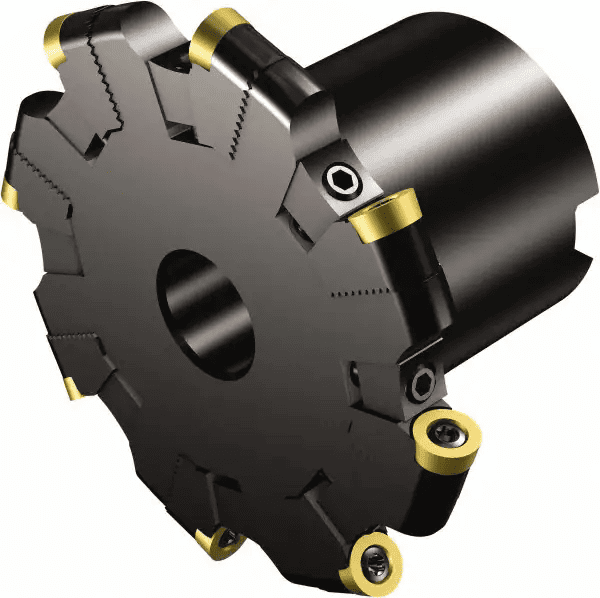
To further enhance the functionality and versatility of slotting cutters, various inserts and accessories are available. Inserts, such as indexable carbide inserts, come in several geometries and grades and can be applied for the production of grooves and slots.
Accessories like holders, arbors, and coolant systems can help to enhance the accuracy and efficiency of the slotting process.
Types of Inserts
There are numerous types of slotting cutter inserts available, including indexable slotting cutters, KNS narrow slotting mills, neutral (full slotting) cutters, and KVNS slotting cutters, each with various geometries and grades to accommodate different workpiece materials. These inserts offer a range of benefits, such as increased tool life, reduced tool wear, and improved cutting performance.
By selecting the appropriate insert for your slotting cutter, you can optimize its performance while minimizing tool wear and tear. This not only enhances the overall efficiency of your cutting process, but also ensures the longevity of your tools.
Accessory Options
A variety of accessory options are available for slotting cutters, including indexable slotting cutters, jointing cutters, groover sets, slotters, slotting cutter adapters, slotting cutter arbors, three-wing slotting cutters, two-wing slotting cutters, T-slot cutters, and side and face milling cutters. Each of these accessories serves a specific purpose, such as connecting slotting cutters to machines, mounting slotting cutters, or creating different types of slots in a workpiece.
By selecting the appropriate accessories for your specific application, you can enhance the versatility of your slotting cutter, ensuring that you have the right tools at your disposal for any job. This not only increases the overall efficiency of your cutting process, but also enables you to access a wide range of projects with confidence.
Maintaining and Caring for Your Slotting Cutter
Proper maintenance and care for your slotting cutter are essential for maximizing its performance and longevity. Regularly inspecting, cleaning, and lubricating your cutter can help maintain its rigidity, ensure a consistent cutting width, and prolong its lifespan.
It is also important to sharpen and replace inserts as needed to keep your cutter in optimal working condition.
Cleaning and Storage
Cleaning and storing your slotting cutter correctly are essential for its extended life, rust prevention, and successful completion. To clean a slotting cutter, use a soft cloth and a mild detergent, ensuring that all debris and dirt are thoroughly removed from the cutter and its components.
When it comes to storage, it is recommended to keep your slotting cutter in a dry and cool place, avoiding direct sunlight or damp environments. Proper storage not only prevents rust and corrosion, but also ensures that your cutter remains in top condition for your next project.
Sharpening and Replacing Inserts
Sharpening and replacing inserts for your slotting cutter is essential to maintaining cutting performance, guaranteeing precise and smooth cuts, and extending the tool’s life. The procedure entails removing the old insert, cleaning the slot, and fitting the new insert.
To ensure proper sharpening and replacement of inserts, it is imperative to use the appropriate tools and materials, observe safety protocols, and abide by the manufacturer’s instructions. By doing so, you can keep your slotting cutter in peak condition, ready to tackle any project that comes your way.
Troubleshooting Common Issues
Common challenges encountered when using slotting cutters include inadequate blade sharpening, excessive run-out, inconsistent slit edge quality, increased dust, poor stability, and vibration in corners.
By addressing these issues, you can greatly improve the performance and efficiency of your slotting cutter, ensuring that your cuts are precise and smooth.
Inaccurate Cuts
Precision cuts are essential for successful machining when utilizing slotting cutters. Factors such as incorrect depth of cut percentages, feed rate, cutting speed, cutting angle, and rigidity of the cutter can lead to inaccurate cuts.
To address these issues, adjustments can be made to the depth of cut percentages, feed rate, cutting speed, cutting angle, and rigidity of the cutter. By taking the necessary steps to rectify inaccurate cuts, you can ensure your slotting cutter remains a reliable and efficient tool for your projects.
Cutter Wear and Tear
Minimizing wear and tear on your slotting cutter is crucial for enhancing tool life, decreasing power consumption, tool wear, and noise levels, averting damage to the cutting edges, and improving cutting performance. Wear and tear can be caused by factors such as improper use, unsuitable cutting parameters, inadequate cutting speeds, inadequate feed rates, insufficient coolant, and inadequate lubrication.
By adjusting cutting parameters, cutting speeds, feed rates, coolant, and lubrication, you can reduce wear and tear on your slotting cutter. Regular inspection and maintenance, along with proper usage, will help ensure your cutter remains in optimal condition, providing reliable performance throughout its lifespan.
Summary
In conclusion, slotting cutters are versatile and powerful tools that can greatly enhance your machining capabilities. By understanding the different types of cutters, selecting the right one based on edge length and material compatibility, using appropriate inserts and accessories, and properly maintaining and caring for your tool, you can ensure that your slotting cutter remains a reliable and efficient asset in your toolbox. With the right knowledge and care, your slotting cutter will serve you well, helping you achieve precise and smooth cuts in a variety of materials for many projects to come.
Frequently Asked Questions
What is a slotting cutter used for?
Slotting cutters are used to create slots and grooves up to 9/16” deep, allowing for the production of T-moldings, Spline Joints, Tongue & Groove Joints and other applications in materials such as plywood, hardwoods and softwoods.
These cutters are designed to be used in a router table, drill press, or other stationary power tool. They are available in a variety of sizes and styles, allowing for a wide range of applications. The cutters are made from high-speed steel and feature a unique design that helps to reduce chatter and vibration.
The cutters are designed to be used with the cutters.
What is a slot milling cutter?
Slot milling cutters are cutting tools used to machine slots in a workpiece, with different types selected depending on the shape, size, and width of the slots.
Face milling cutters and end mills can both be used for this purpose.
How do I choose the right slotting cutter for my needs?
To choose the right slotting cutter for your needs, take into account the desired slot size, material being cut, and type of cutter.
Consider edge length and material compatibility for best performance.
What are some common inserts and accessories for slotting cutters?
Slotting cutters often use indexable carbide inserts in a variety of geometries and grades, plus holders, arbors, and coolant systems as accessories to help increase accuracy and efficiency.
These accessories can help improve accuracy and efficiency when cutting slots. They include indexable carbide inserts in a variety of geometries and grades, holders, arbors, and coolant systems.
Using these accessories can help ensure that the slotting cutter is able to work.
How can I maintain and care for my slotting cutter?
To ensure consistent and optimal performance of your slotting cutter, regularly inspect, clean, lubricate, sharpen, and replace inserts as needed. This will help to ensure that your cutter is running at its best and will help to extend its life.
Like what you read on CNCCookbook?
Join 100,000+ CNC'ers! Get our latest blog posts delivered straight to your email inbox once a week for free. Plus, we’ll give you access to some great CNC reference materials including:
- Our Big List of over 200 CNC Tips and Techniques
- Our Free GCode Programming Basics Course
- And more!
Just enter your name and email address below:
100% Privacy: We will never Spam you!
Recently updated on March 1st, 2024 at 04:30 pm

Bob is responsible for the development and implementation of the popular G-Wizard CNC Software. Bob is also the founder of CNCCookbook, the largest CNC-related blog on the Internet.

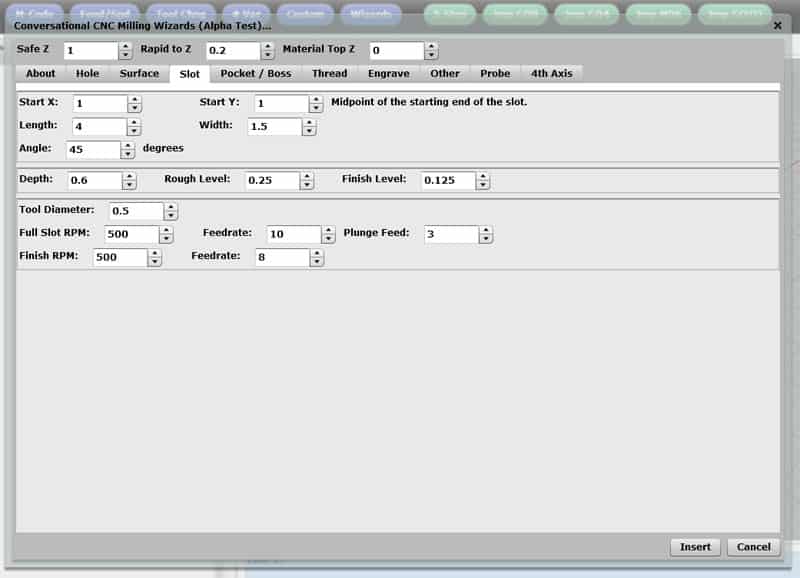
![Dial Indicators & Dial Test Indicators: Easy Guide [2024] dial indicator](https://www.cnccookbook.com/wp-content/uploads/2018/10/DialIndicator.png)
![Beginner's Guide to CNC Machine Setup [ 2024 ] CNC Setup](https://www.cnccookbook.com/wp-content/uploads/2019/05/CNCSetupToolCart.jpg)
![Micrometer Reading, Use, & Measurement: Easy Guide [ 2024 ] micrometer measurement](https://www.cnccookbook.com/wp-content/uploads/2018/10/MicrometerMeasurement.png)
![What is a CNC Programmer? [ 2024 Salary, Skills, Openings Guide ] A CNC programmer working on a machine.](https://www.cnccookbook.com/wp-content/uploads/2019/09/img_5d6ebd47855a1.png)
![Surface Plate 2024 Complete Guide [Granite, Cast Iron, Steel] A surface plate with a lot of equipment on it.](https://www.cnccookbook.com/wp-content/uploads/2018/11/img_5bef1ca85a2c5.png)
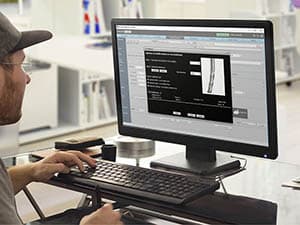
![CNCCookbook 2024 CAD Survey [ Market Share, Customer Satisfaction ] Exploded Auto Draft cad drawing of a mechanical assembly with transparent components to showcase internal structure and placement.](https://www.cnccookbook.com/wp-content/uploads/2024/04/img_660c6ff352d5b-150x150.png)